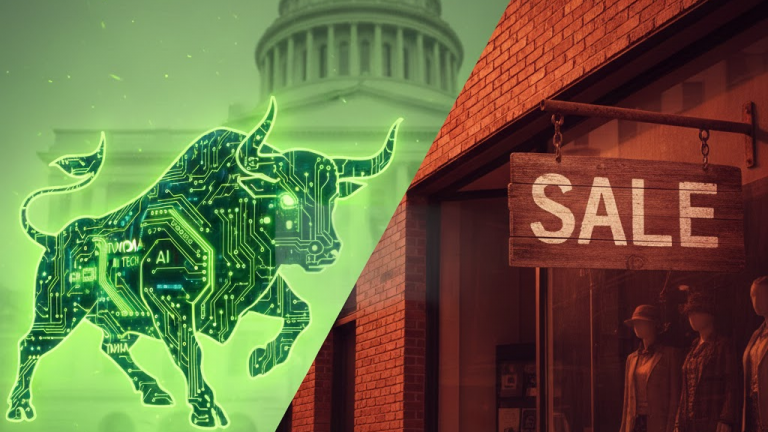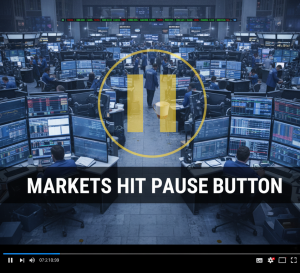Summary
The European Central Bank’s decision to pause interest rate hikes while maintaining a hawkish stance on inflation indirectly reinforces the US Federal Reserve’s own “higher for longer” policy narrative. While the Fed’s decisions are driven primarily by US domestic data, the ECB’s actions provide a crucial global context.
The shared struggle against persistent inflation, even amid weakening growth in Europe, gives the Fed more justification to keep its policy tight. Furthermore, the potential for policy divergence could strengthen the U.S. dollar, which would help the Fed’s inflation fight by making imports cheaper. However, the slowing Eurozone economy also acts as a headwind for global growth, a factor the Fed must monitor as it could eventually cool the US economy as well.
The Core News (What Happened?)
The European Central Bank (ECB) held its key deposit rate at 4.00% but signaled that the fight against inflation is not over and that future rate hikes are not off the table. This “hawkish pause” comes as the ECB simultaneously lowered its economic growth forecasts for the Eurozone, highlighting the difficult trade-off it faces between controlling inflation and avoiding a recession. This creates a complex signal for other global central banks, including the U.S. Federal Reserve.
Context & Expectations
The U.S. Federal Reserve, like the ECB, operates under a data-dependent framework with a primary focus on bringing inflation back to its 2% target. The Fed’s key inflation gauge is the Personal Consumption Expenditures (PCE) price index, and its policy decisions are most influenced by domestic labor market data (e.g., Non-Farm Payrolls) and inflation reports (CPI and PCE). While the Fed does not base its policy on the ECB’s moves, it closely monitors international economic developments as part of its overall assessment. A significant slowdown in a major economic bloc like the Eurozone can have spillover effects on the U.S. economy through trade and financial channels.
Potential Implications (The Bull vs. Bear Case for Fed Hawkishness)

- Bull Case (Reinforces a Hawkish Fed): The ECB’s persistent inflation problem validates the Federal Reserve’s own concerns about the stickiness of price pressures. Analysts at Citigroup have noted that with major central banks still in tightening mode, it provides the Fed with more international support to maintain its restrictive stance. Furthermore, if the ECB is on a prolonged pause while the Fed hints at one more potential hike, this policy divergence would likely strengthen the U.S. dollar against the euro. A stronger dollar is disinflationary for the U.S. as it lowers the cost of imported goods, effectively doing some of the Fed’s work for it and justifying a “higher for longer” rate stance.

- Bear Case (Argues for a More Cautious Fed): The ECB’s own pessimistic growth forecast for the Eurozone is a significant warning sign for the global economy. A report from Reuters highlights that a weakening European economy will reduce demand for U.S. exports, which could act as a drag on American corporate earnings and economic growth. This global headwind could be a key reason for the Fed to pause its own rate-hiking cycle. Should the Eurozone tip into a recession, the risk of it spreading through global financial markets could compel the Fed to adopt a more cautious and less aggressive stance to avoid exacerbating a potential global downturn.
Key Data & Metrics
For comparison, here are the key metrics for both economic areas:
- Policy Interest Rate: Fed Funds Rate at 5.25%-5.50% vs. ECB Deposit Rate at 4.00%
- Latest Headline Inflation: U.S. CPI at 3.7% (August, year-over-year) vs. Euro Area HICP at 5.2% (August, year-over-year)
- Central Bank Inflation Target: 2% for both the Federal Reserve (PCE) and the ECB (HICP)
- Latest GDP Growth: U.S. GDP at 2.1% (Q2 2025, annualized) vs. Euro Area GDP at 0.1% (Q2 2025, quarter-over-quarter)
Disclaimer: This article is for informational purposes only and does not constitute financial, investment, or legal advice. The information provided is a synthesis of publicly available data and expert analysis and should not be considered a recommendation to buy or sell any security. Investing in the stock market involves risk, including the possible loss of principal. Past performance is not indicative of future results. Readers should consult with a qualified financial advisor to determine an investment strategy that is suitable for their own personal financial situation and risk tolerance.






















